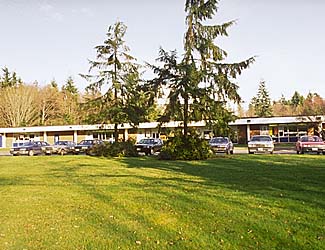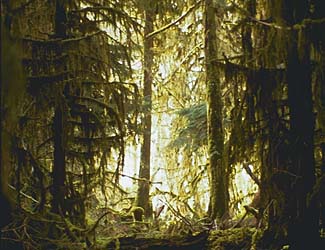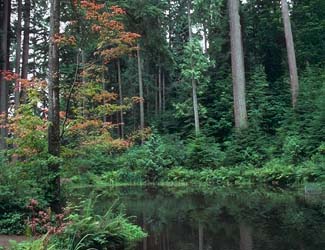
Home | About Us | Maps | Animal Facts
GAP Analysis Predicted Distribution Map

Home | About Us | Maps | Animal Facts
Species Code: ENES
Metadata (Data about data or how the map was made) |
Distribution and Habitat Requirements
Ensatina is most commonly associated with woody debris, downed logs, and bark piles at the base of snags and is sometimes in wood
piles in peoples' yards west of the Cascades (Leonard et al., 1993). It is rarely found in perennially wet areas.
This species occurs in conifer forest and is found in riparian floodplains dominated by hardwoods if there is a good quantity of wood debris on the ground. If residual downed logs from a former conifer stand are present, it is possible that this species may also live in stands of alder trees. It has been found on Ozette Island.



|
Models
The ecoregions west of the Cascades, plus areas into the East Central Cascades were selected. West of the Cascades crest,
all zones up to and including Western Hemlock were core. In the Southwest Cascades, the Silver Fir zone
was also core and Mountain Hemlock was marginal.
Good habitats were open and closed-canopy, mid- to late-seral hardwood, hardwood/conifer, and conifer forests. Young forests were not considered adequate to maintain a population over a period of time. Although individuals occasionally occur in residential areas, there is no evidence that a population persists in such areas, so we excluded all developed habitats.
Translated from the Washington Gap Analysis Amphibians and Reptiles Volume by Karen Dvornich
Webpage designed by Dave Lester